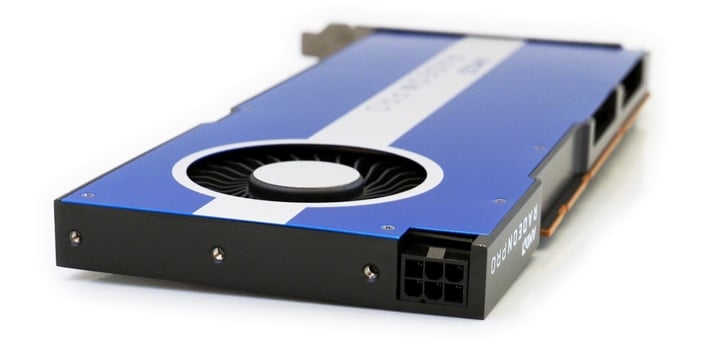AMD Radeon Pro W5500 Review: Navi Pro Graphics For Less
AMD Radeon Pro W5500: Image Processing And Compute Benchmarks
How We Configured Our Test Systems: We tested the professional graphics cards in this article on an Intel X299-based motherboard powered by an Intel Core i9-10980XE 18-core processor and 32B of Corsair DDR4 RAM. The first thing we did when configuring the test system was enter the UEFI and set all values to their "high performance" or "optimal" default settings and disabled any integrated peripherals that wouldn't be put to use. The memory's X.M.P. profile was enabled to ensure optimal memory performance (but CPU core enhancement was disabled), the solid state drive was formatted, and Windows 10 Professional x64 was installed. When the installation was complete, we fully updated the OS and installed all of the drivers, applications, and benchmark tools necessary to complete our tests.
|
|
|
| Hardware Used: Intel Core i9-10980XE (3GHz - 4.4GHz, 18-Core) Gigabyte Aorus X299 Gaming 7 Pro (Intel X299 Chipset) NVIDIA Quadro RTX 4000 AMD Radeon Pro WX 8200 AMD Radeon Pro W5700 AMD Radeon Pro WX 7100 AMD Radeon Pro W5500 32GB Corsair DDR4-2933 Samsung SSD 960 Pro Integrated Audio Integrated Network |
Relevant Software: Windows 10 Pro x64 AMD Radeon Pro v20.Q1.1 NVIDIA Quadro Drivers v441.12 Benchmarks Used: SPECviewperf 13 LuxMark v3.1 Blender v2.82 SiSoft SANDRA 2018 SP2 VRMark Unigine Superposition IndigoBench |
|
|
|
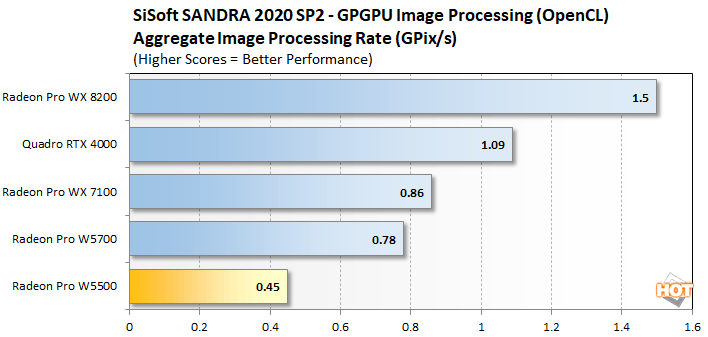
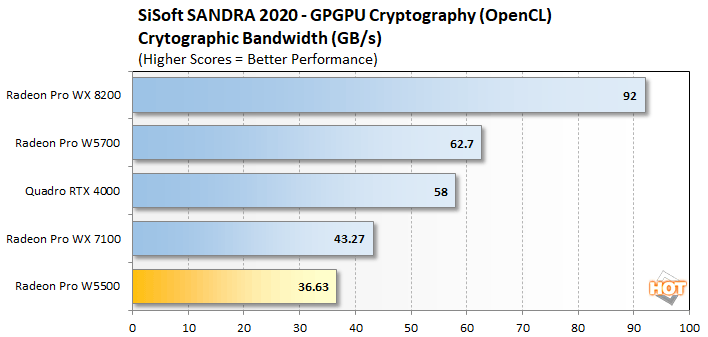
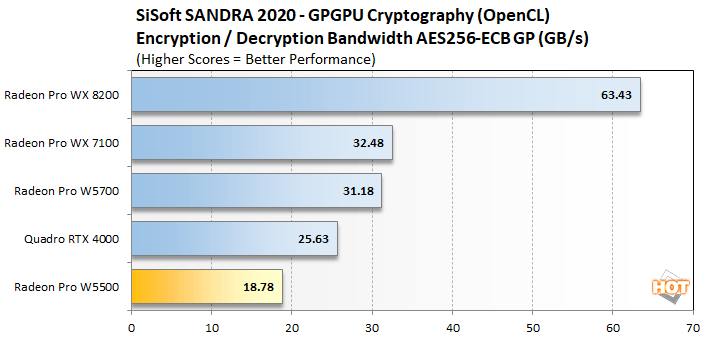
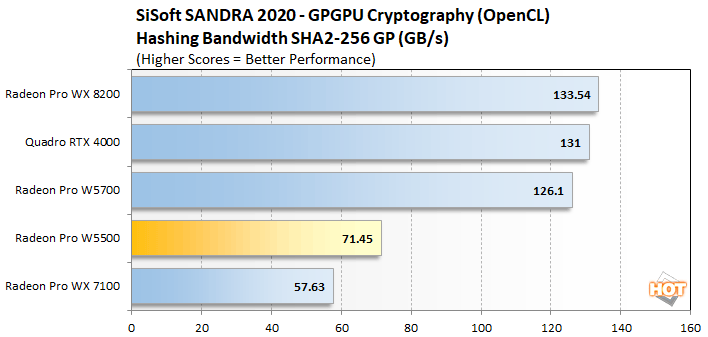
|
LuxMark is a cross-platform, OpenCL-accelerated 3D rendering benchmark. It's a tool based on the open source LuxRender physically-based spectral rendering engine, which accurately models the transportation of light and supports high dynamic range. LuxRender features a number of material types to allow rendering of photo-realistic and artistic scenes. LuxRender is free software, licensed under the GPL, that offers plugins for packages like Blender, Maya, Cinema 4D and 3DS Max.
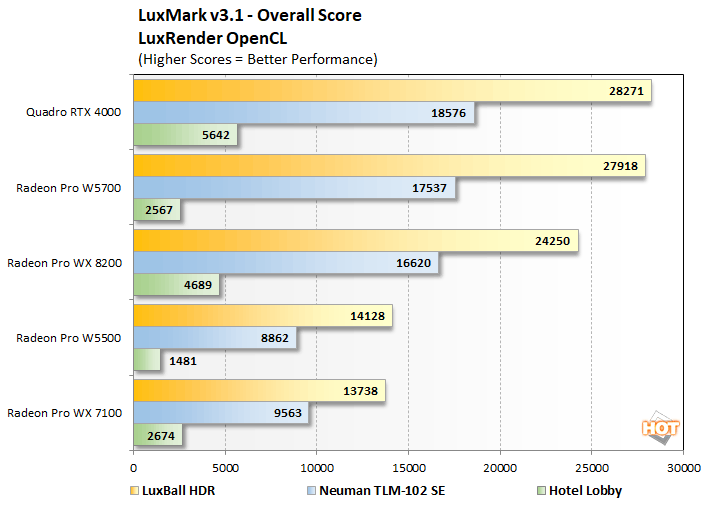
|
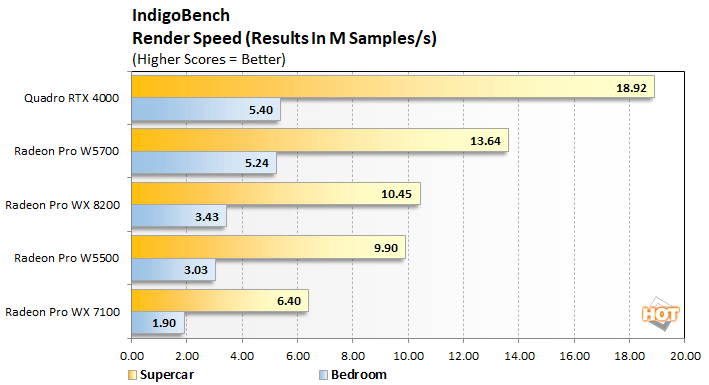
IndigoBench has the new Navi-based Radeon Pro W5500 outpacing the Polaris-based WX 7100, and nearly catching the WX 8200. The higher-end (and obviously pricier) Radeon Pro W5700 and Quadro RTX 4000 finish well out in front of the other cards.
|


